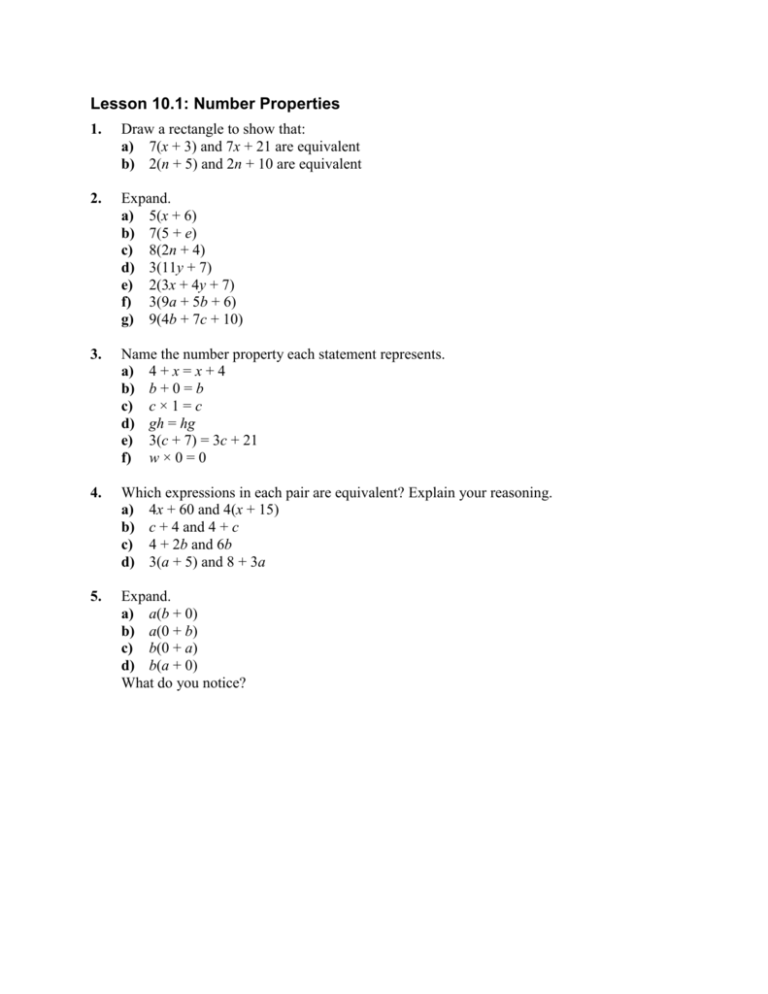10.1 Number Properties
advertisement

Lesson 10.1: Number Properties 1. Draw a rectangle to show that: a) 7(x + 3) and 7x + 21 are equivalent b) 2(n + 5) and 2n + 10 are equivalent 2. Expand. a) 5(x + 6) b) 7(5 + e) c) 8(2n + 4) d) 3(11y + 7) e) 2(3x + 4y + 7) f) 3(9a + 5b + 6) g) 9(4b + 7c + 10) 3. Name the number property each statement represents. a) 4 + x = x + 4 b) b + 0 = b c) c × 1 = c d) gh = hg e) 3(c + 7) = 3c + 21 f) w × 0 = 0 4. Which expressions in each pair are equivalent? Explain your reasoning. a) 4x + 60 and 4(x + 15) b) c + 4 and 4 + c c) 4 + 2b and 6b d) 3(a + 5) and 8 + 3a 5. Expand. a) a(b + 0) b) a(0 + b) c) b(0 + a) d) b(a + 0) What do you notice?
